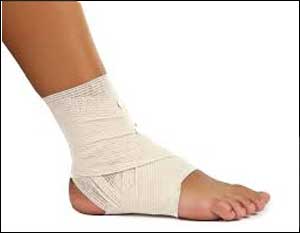- Home
- Editorial
- News
- Practice Guidelines
- Anesthesiology Guidelines
- Cancer Guidelines
- Cardiac Sciences Guidelines
- Critical Care Guidelines
- Dentistry Guidelines
- Dermatology Guidelines
- Diabetes and Endo Guidelines
- Diagnostics Guidelines
- ENT Guidelines
- Featured Practice Guidelines
- Gastroenterology Guidelines
- Geriatrics Guidelines
- Medicine Guidelines
- Nephrology Guidelines
- Neurosciences Guidelines
- Obs and Gynae Guidelines
- Ophthalmology Guidelines
- Orthopaedics Guidelines
- Paediatrics Guidelines
- Psychiatry Guidelines
- Pulmonology Guidelines
- Radiology Guidelines
- Surgery Guidelines
- Urology Guidelines
Management of Chronic Wounds—a multimodal approach

Effective care for chronic wounds requires a multimodal approach, including wound bed optimization, management of chronic medical conditions, and consistent follow-up. The chronic wound management in the ambulatory setting reviewed in the JAMA Clinical Update highlights the evidence supporting a diverse array of treatment options.
The goals for dressing management for chronic wounds include the following: (1) maintaining a moist wound environment; (2) preventing or treating infection; and (3) minimizing skin irritation or friction between the wound and clothing or devices such as wheelchairs.
Dressing Selection
Wound dressings are selected based on clinical assessment of the patient’s wound. The goals for dressing management for chronic wounds include the following: (1) maintaining a moist wound environment; (2) preventing or treating infection; and (3) minimizing skin irritation or friction between the wound and clothing or devices such as wheelchairs. Dressings may also deliver debriding or antimicrobial agents.
Standard Gauze
Sterile gauze dressings are the standard to which other wound care products are compared. Wet-to-dry packing consists of moistened gauze placed into the wound with changes at least once daily, which provides debridement. If wet-to-dry packing is used, it should not be in contact with the adjacent intact skin around the wound because it causes maceration of healthy tissue, enlarging the wound.
Negative-Pressure Wound Therapy(NPWT)
High-quality evidence has shown that NPWT reduces wound exudate, debris, and bacterial contamination while increasing vascular perfusion and granulation of the wound base. A meta-analysis of randomized trials showed that NPWT, compared with standard wound care, was associated with decreased wound size and shorter time to healing.
Advanced Dressings
Dressings such as alginates, foams, hydrocolloids, and hydrogels are intended to maintain a moist wound environment. Alginates and foams absorb excess exudate, while hydrocolloids prevent tissue dehydration. Hydrogels hydrate dry wounds and absorb exudate in overly moist wounds. Limited evidence suggests that patient comfort is improved with these moisture-modulating dressings. Topical antimicrobial agents used in wound management are iodine and silver-based preparations that have antimicrobial properties. Silver agents may lower bacterial contamination in a wound but inappropriate extended use may impede healing.
Skin substitutes provide temporary wound coverage but are generally used in specialty wound care settings given their costs and specific indications. Porcine collagen products, composed of an acellular dermal matrix, extracellular matrix, or both products, have progressed from use solely in burns to widespread application.
Adjuvant Wound Therapies
Key adjunctive wound therapies are recommended based on high-quality evidence. Compression therapy is the mainstay of treatment for venous stasis ulcers, with 8 randomized clinical trials showing improved time to healing with compression vs no compression treatment. To prevent pressure ulcers and promote their healing, patient repositioning and pressure offloading is recommended, although no high-quality comparative trials exist to support this recommendation. A meta-analysis of clinical trials suggested that foam alternatives (such as egg crate foam overlays) to standard hospital mattresses was associated with reduced incidence of pressure ulcers in at-risk patients. In contrast, there is good evidence to support the use of hyperbaric oxygen therapy to decrease mucosal defects.
There was moderate-quality evidence from 3 trials that complete mucosal cover of exposed bone which was more likely to be achieved in patients with osteoradionecrosis when hyperbaric oxygen therapy was administered and from 2 trials that showed wound dehiscence was less likely following operations to repair mandibular osteoradionecrosis with the addition of hyperbaric oxygen therapy.
The authors concluded that proper management for chronic wounds requires a multimodal approach and advanced wound therapies, such as NPWT, can benefit some patients, but evidence to support the use of one specific advanced dressing type over another is limited. However, dressing selection can generally be based on wound assessment, physician and patient familiarity with the products, availability, and affordability.
For reference log on to http://10.1001/jama.2018.12426

Disclaimer: This site is primarily intended for healthcare professionals. Any content/information on this website does not replace the advice of medical and/or health professionals and should not be construed as medical/diagnostic advice/endorsement or prescription. Use of this site is subject to our terms of use, privacy policy, advertisement policy. © 2020 Minerva Medical Treatment Pvt Ltd